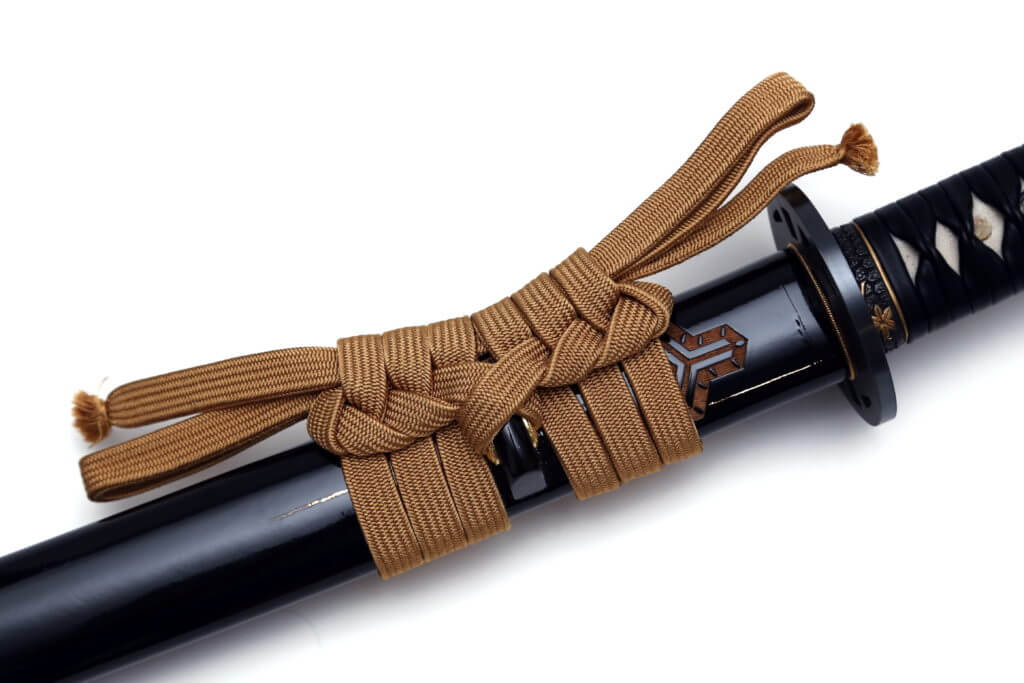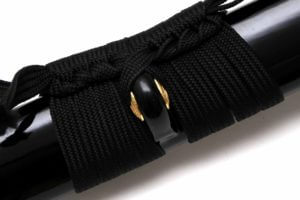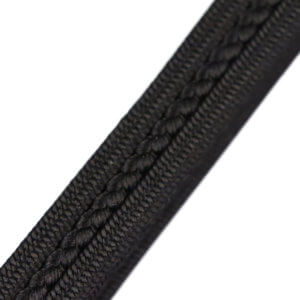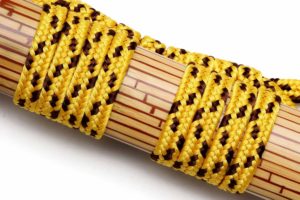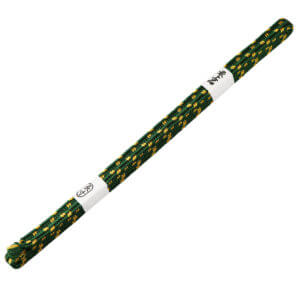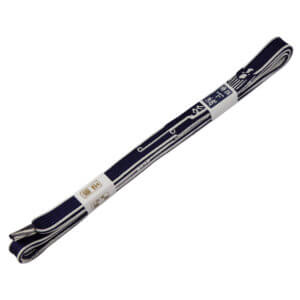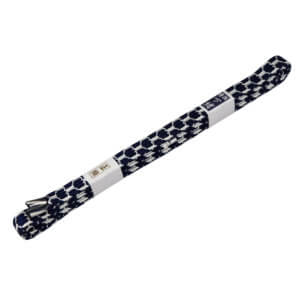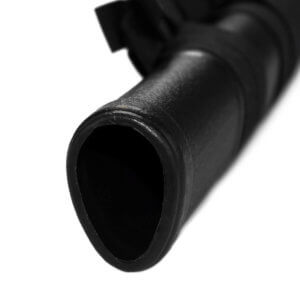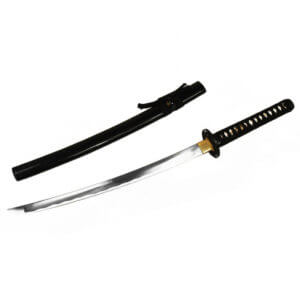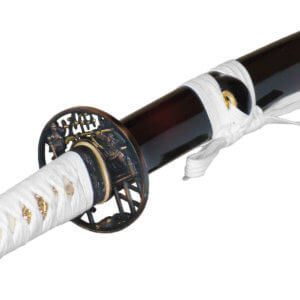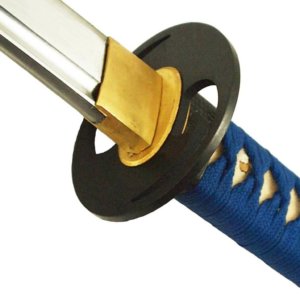Sageo is the name for the band on the scabbard of a Japanese sword.
In addition to the main task of securing the sword to the belt, the sword sheath band also fulfils a decorative purpose.
These ribbons are made from various materials. The most common are cotton, silk and synthetic fibres.
Where exactly Sageo is located is explained in the article on the Japanese sword scabbard described.
The length varies depending on the size of the sword and the type of binding. A length of approx. 90cm is sufficient for a tanto, a length of approx. 110cm is usually used for a wakizashi and a length of between 180cm and 220cm for a katana.
The most common production methods for the ribbon are weaving and braiding.
Popular types and patterns for the Sageo
The name for the Sageo depends on the manufacturing pattern. These are the most common:
Kakucho = Tightly woven sword sheath band
A very robust design. Due to the weaving, it is very tightly woven and can withstand a lot. Kakucho are usually single-coloured. They are very suitable for swords that are frequently used for training.
Kikko
This name stands for the very characteristic colouring of some sageo. They have an inlaid pattern that is reminiscent of the shell of a turtle viewed from above.
Uragawari
A two-coloured ribbon with two different colours on the front and back. Often with additional symbols incorporated. A visually very appealing design.
Nakafuji
This is a special form of sageo in which a wide-meshed strip is incorporated in the centre, while the rest of the ribbon is made with a narrow mesh. The ribbon is both braided and woven to achieve this effect.
Sazanami
It is woven in such a way that an arrow pattern is created in the fabric.
Shigeuchi = Braided sword scabbard strap
This type of sageo is braided, resulting in a relatively coarse pattern. This makes the sword sheath band look very attractive. These straps are often made using several colours.
Buy high-quality Sageo from Japan in our Samurai online shop (only a selection of the range):
Tying the sageo strap on the katana correctly
There are many options for binding. If you are training in a dojo, it is best to ask on site what types of binding are used there.
Here are a few basic types of binding that are not completely wrong.
Simple style that is common for martial arts training:
Safety binding if the centreboard is to remain closed:
Simple knot for storing a sword
Decorative knot as a representative binding (requires dexterity):

